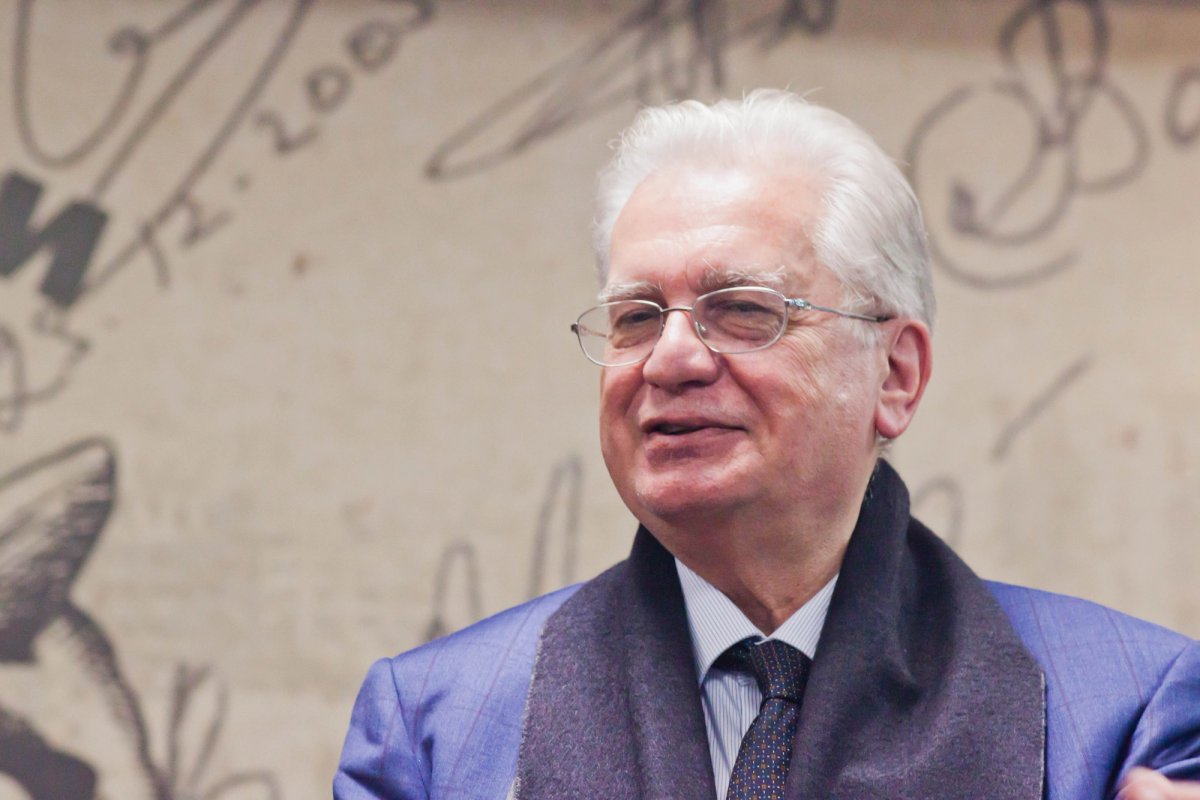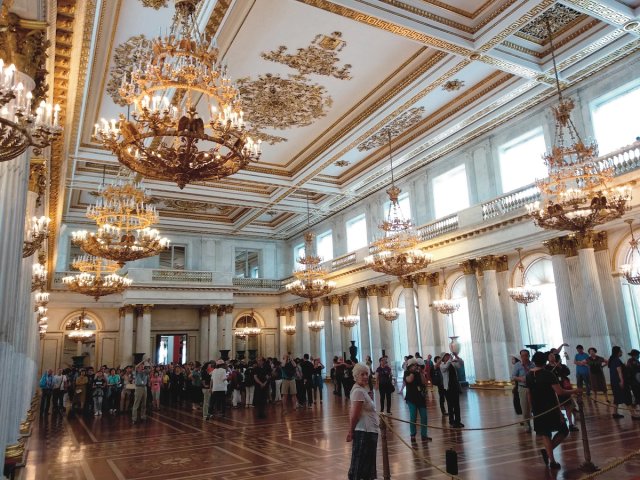Mikhail Piotrovsky, the director of the State Hermitage Museum in St Petersburg, has responded to claims made by the London art dealer Andre Ruzhnikov that an exhibition held recently at the Winter Palace, Fabergé, Jeweller to the Imperial Court (closed 14 March), allegedly includes a number of “tawdry fakes”.
“Any exhibition at the Hermitage Museum is a research project. Technical analysis of the objects on display is part of the Hermitage’s Fabergé research programme. It is being carried out with the owners’ consent. The results of these studies and of panel discussions are to be published later,“ Hermitage Museum’s director Mikhail Piotrovsky told our sister publication The Art Newspaper Russia.
The director maintains that previously unknown works can resurface, and that the museum provides the best context to analyse and discuss these discoveries. “Placed next to objects from the Hermitage, things can be seen more clearly and comprehensibly. In the halls of the museum, it is possible to look at them and reflect on whether they live up to them or not,” Piotrovsky said during an online presentation on 17 February about the Hermitage’s precious metals restoration laboratory, which has been tasked with studying the pieces.

The Hen is among the Fabergé works on show at the Hermitage believed by Ruzhnikov to be counterfeits www.ruzhnikov.com
At the beginning of March, Piotrovsky opened a Hermitage research conference on art jewellery by saying that a “showcase with scientifically proven fakes in ‘House of Fabergé’ style" had been added to the exhibition, as well as “a series of objects from the Hermitage collection that raise certain doubts.”
“The Hermitage collects and studies everything,” he said, according to his address posted on the museum’s site. “This is the museum’s role.”
He also spoke of the changeability of attribution: “Final decisions on the history of applied art objects are rare, in part because the objects change hands so often and this can be ‘exploited’. It is the attribution process, which is so important a part of museum studies. There are many difficulties in this process, attributions, even when they concern Rembrandt or Picasso, tend to 'float’.”
Ruzhnikov, who has dealt in Fabergé objects for almost 50 years, tells The Art Newspaper, “It is total rubbish to say that the Hermitage is acting as a venue for real discussions in this case. One of the greatest museums in the world is showing garbage.” The goal, he says, of including the works in the exhibition is to legitimise them.
Ruzhnikov, who in the past worked on billionaire Viktor Vekselberg’s acquisition of Malcolm Forbes’s Fabergé collection, has detailed his claims in a series of posts on his bilingual website. He started his campaign with an open letter addressed to Piotrovsky questioning the attribution of pieces on loan from Alexander Ivanov, a businessman and collector who opened a Fabergé museum in Baden-Baden, Germany, in 2009.
He also challenged the legitimacy of an Easter egg identified in the exhibition catalogue as Imperial Easter egg with surprise in the form of a hen by the Fabergé master Mikhail Perkhin, on loan from St Petersburg’s Museum of Christian Culture. That museum was founded with Ivanov’s help by Konstantin Goloshchapov, a religious businessman described in the Russian media as President Vladimir Putin’s former masseur.
Ivanov says that “Konstantin Goloshchapov loaned me a few million dollars to open the Fabergé Museum [in Baden-Baden]”, but adds that he has since paid the money back.
Ivanov says that Fabergé has been his passion for decades. “When the Soviet Union collapsed, I got rich on computers, office equipment, fertiliser and other goods. I didn’t put the money into yachts and planes. I bought Fabergé. I have nearly 4,000 pieces, the largest collection in the world. I bought most of what was sold at auction in the last 25 years.”
Periodic scandals
Ruzhnikov’s allegations have rattled the Fabergé ecosystem, which faces periodic scandals, although many of the same pieces in the Hermitage exhibition had previously been shown at the New Jerusalem State Museum of History and Art near Moscow in 2018.
In 2015, the Hermitage opened a display of dozens of utilitarian Fabergé pieces from the First World War from the collection of Ivanov’s mysterious Russian National Museum in Moscow (also participating in the latest exhibition), as well as the Rothschild clock egg, which he bought at Christie’s for $18.5m in 2007. He subsequently gave the piece to President Putin, who donated it to the Hermitage.
“What Ruzhnikov has written is in my opinion and in the opinion of a number of my colleagues, correct,” says Géza von Habsburg, a Fabergé expert known for his work at Christie’s as well as shows including Fabergé in America and coining the term “Fauxbergé”. “It is unusual for a museum to show items with no provenance or scholarly research to back up their authenticity.”
Another piece in the Hermitage exhibition on loan from Ivanov, the Wedding Anniversary Egg (1904), allegedly commissioned by Tsar Nicholas II for his tenth wedding anniversary, was already deemed suspect by the US scholar DeeAnn Hoff in 2020. She published an article pointing out that some of the portraits on the egg appear to have been based on recent colourised images of the tsar and his family. An original black-and-white photograph of one of the sitters was taken in 1906, two years after the egg was purportedly created.
Ivanov said at a lecture in January that he has documents explaining the photo-dating discrepancies. He also described Ruzhnikov as a “self-styled expert and adversary of the Hermitage.” At a Hermitage conference in March, Ivanov said that he plans to sue Ruzhnikov, the RIA Novosti news agency reported.



